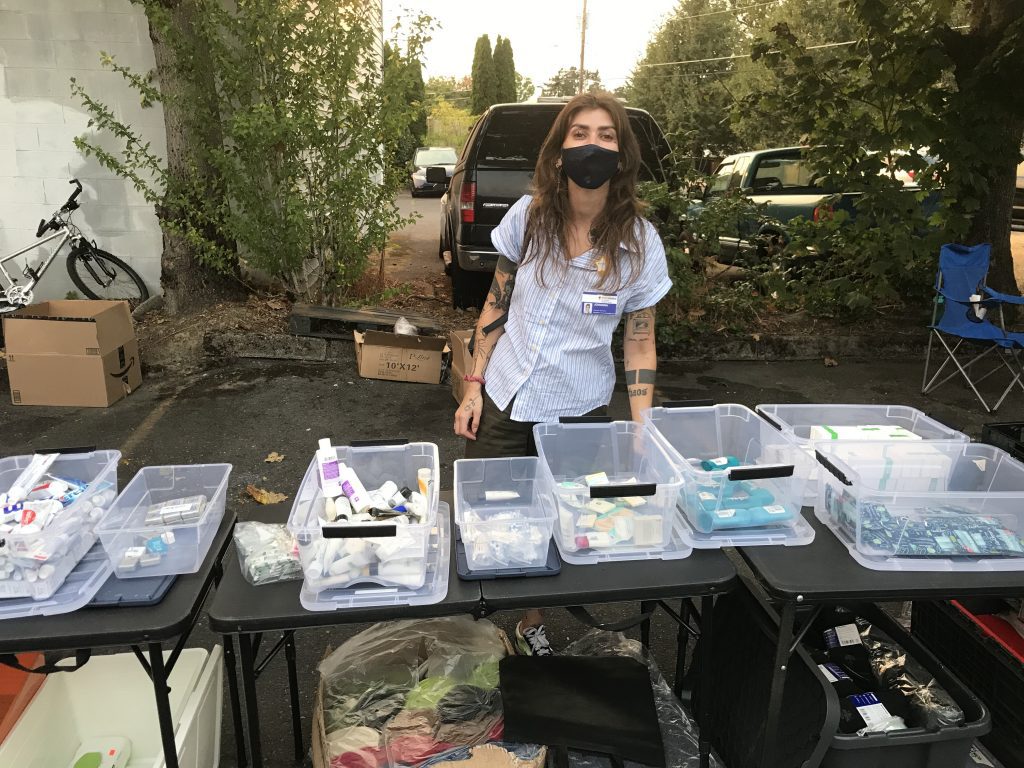
A staffer with Providence Health offers toiletries and other necessities for unsheltered individuals at a LoveOne event. Photo courtesy of Rebecca Wilkinson
In March 2020, as the COVID-19 threat was escalating, Luminis Health in Annapolis, Maryland, received a call for help from a nearby housing complex for low-income seniors. Residents there were receiving insufficient and conflicting information about how to stay safe.
Luminis sent a community health nurse to the complex, who saw that many residents lacked basic resources like cleaning supplies, hand sanitizer, and masks. With limited internet access, they were confused and fearful. Addressing the problem would require a sustained team effort.
“So we went door-to-door and spread the message about basic COVID prevention measures,” says Christine Crabbs, Luminis’ director of community health. “We delivered bags with prevention information, phone numbers to call for care, and soap, detergent, and masks.”
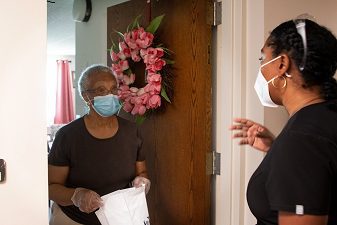
Photo courtesy of Luminis
The messaging and supply-delivery effort expanded to include other housing complexes—some senior-specific, some for families—and later shifted to vaccine delivery. Along the way, says Crabbs, her team collaborated with hundreds of local partners, including private leasing groups and housing management companies, food-providing organizations, a large church, a neighborhood revitalization nonprofit, and a local high school that helped collect 10,000 detergent pods.
The American Hospital Association (AHA) recently recognized Luminis’ COVID-19 Community Prevention Program as one of its 2021 Dick Davidson NOVA Awardees. Since 1994, the NOVA Award program has honored AHA-member health institutions that have worked to improve community health through collaborations with community-based partners.
AHA’s Jane Jeffries, who directs the NOVA Award process, notes that over the past few years, “the focus on social determinants of health has skyrocketed,” with programs addressing such nonmedical factors as homelessness, food insecurity, and lack of health care information and access that affect individual and community health.
This year’s five winners demonstrate innovative ways to provide communities with COVID-19 health information; services to counter isolation and improve home safety for older adults; housing assistance and continuing case management for vulnerable emergency room patients; improved access to healthy food; and referrals to an array of resources from shelter to legal aid to family services.
With an estimated 80 percent of controllable health outcomes tied to factors outside clinical care, health systems across the U.S. are funding affordable housing and workforce development or expanded mental health training and chronic disease management in their communities. And some are putting boots on the ground, deploying hospital staff for outreach and case management in tandem with community partners.
And they’re seeing results.
Luminis’ Community Prevention Program has reached 50,000 residents and likely helped flatten the infection curve locally in the early days of the pandemic. Another 2021 NOVA awardee, Better Outcomes through Bridges (BOB), connects behavioral health and substance use disorder patients who are experiencing homelessness with health and housing services after they leave the emergency department. Deploying peer outreach workers and forging novel community partnerships, the initiative led by Portland, Oregon-based Providence Health has cut participants’ emergency department use by 45 percent since the program began and reduced hospital stays by 650 days over a nine-month period for a group of 30 substance use disorder patients being treated for systemic infections.
“We can’t do this work alone,” says Becky Wilkinson, Providence Health outreach programs manager, who has managed BOB for four years. “When I came in, my primary focus was on community partnerships.”
One of BOB’s partners is LoveOne, a nonprofit in rural Oregon that provides shower and laundry facilities to unsheltered people. At LoveOne events, Providence Health staffs a booth so participants can access case management and Medicaid assistance along with washers, dryers, and food.
“We’re doing it just once a month, but we have served more than 1,500 people this year,” Wilkinson said in December 2021.
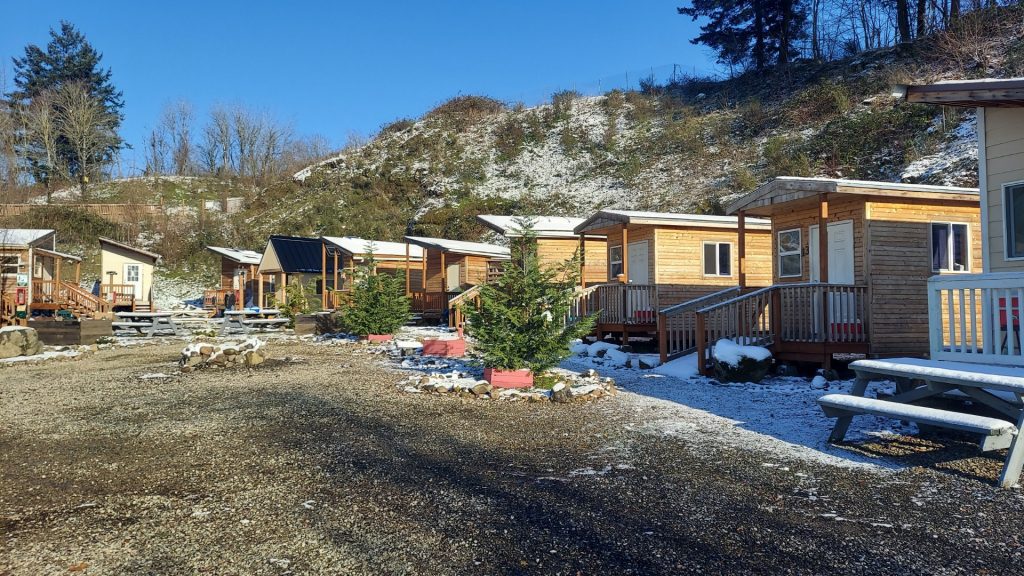
Agape Village has 15 tiny houses for homeless individuals. Photo courtesy of Portland Central Nazarene Church
Another BOB partner is Portland Central Nazarene Church. Its Agape Village, launched in 2019 on church property, contains 15 tiny houses for homeless individuals. Two of the houses are dedicated for BOB clients, and in exchange, BOB provides once-a-week onsite peer support and case management for all Agape Village residents.
“They’ve been with us since the beginning,” says Central Nazarene Pastor Matt Huff. “It’s been a big help from a case management perspective, especially with Providence having medical expertise for when we have issues of mental health.”
Forming Strong Partnerships: Challenges and Tips
Having reviewed hundreds of NOVA applicant partnership descriptions, AHA’s Jeffries says she’s identified some important steps in forging successful programs.
“It’s important to make the case within the organization, find a sponsor or champion within, before you can start marshaling resources and staff members,” she says. “It can be a new process to work with partners outside the organization.”
Further, she says, “The people leading the program need to be talented on many levels to make this work. But also, there’s the understanding that no organization can do everything. They do need these partners. These programs are strong because they have these partners.”
She adds, “Within that is the importance of maintaining ongoing relationships with outside partners. Everyone around the table has to be truly committed. Everyone who’s part of the program has to be a fully involved partner [who] can dedicate resources to it.”
Wilkinson says she needs to spend a lot of time explaining the “what and why” of BOB, with its outside-the-hospital operation and use of peer outreach workers, people who have experienced homelessness or substance use disorder themselves.
“Externally, most people are thrilled that Providence is at the table. It’s a well-respected large organization and maybe hasn’t entered their realm before. Internally, at Providence, it’s ‘What do we do?’ because it’s completely opposite of the traditional medical model of care,” Wilkinson says, referring to the longstanding approach of diagnosing and treating medical issues without addressing the impact of outside social determinants.
“Sharing patient stories has helped tremendously,” she adds. It helps to convey both qualitative outcomes like quality-of-life improvements, and quantitative outcomes like cost savings—and not only in dollars, but in time and bandwidth for local police, public health officials, and emergency responders.
[RELATED ARTICLE: Connecting the City’s Social Services to Help At-Risk Populations]
Wilkinson also leads a grassroots alliance of local agencies in the Portland area and beyond. The group meets monthly to share best practices, and its resource-sharing listserv reaches almost 200 agencies, she says, helping BOB support the populations it serves and cultivate new partner relationships.
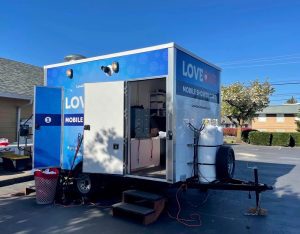
NOVA awardee Better Outcomes through Bridges (BOB), an initiative led by Portland, Oregon-based Providence Health, partnered with LoveOne, a nonprofit in rural Oregon that provides shower and laundry facilities to unsheltered people. Photo courtesy of Rebecca Wilkinson
She suggests reaching out to lesser-known potential partners. “A lot of programs focus on the big players in the community,” says Wilkinson. “I feel the reason BOB is so successful is that we have ‘feet in the street’ finding out what smaller and more obscure nonprofits can contribute.”
Pastor Huff’s key tips for strong partnerships are open communication and a written agreement.
“If it’s going to be a serious partnership, you have to have a MOU [memorandum of understanding],” Huff says. “We set up a detailed MOU with clear lines of communication and clear expectations. Providence is a mammoth institution, but you can’t be afraid to say ‘Hey, that’s not working, we need some help here.’”
He adds, “The MOU clarifies what everyone’s responsibilities are. Both partners can go back to that agreement when needed. It’s not a contract, just putting in writing everyone’s responsibilities. It can be as detailed as you like. Ours is like, a page-and-a-half.”
Wilkinson concurs on the MOU’s value.
“I always leave a clause in the MOU that we can alter it as need be and can revisit it throughout the pilot phase of our partnership,” she says. “It is incredibly important to have very open lines of communication, especially since each partnership and each community is very different, including what the population of homelessness looks like. We have to be able to adapt to the needs of the clients, the community partner, and the community in general.”
Luminis’ Community Prevention Program, which sprang up quickly in response to the pandemic, has grown and succeeded through word of mouth in the community. Also key was that the health system team was willing to jump on opportunities of all types.
Crabbs describes two of the program’s partnerships:
A large African Methodist Episcopal church with thousands of members reached out for help with its food distribution sites. Luminis said yes and brought COVID information and supplies as well. It also said yes to making a doctor available to speak at virtual Bible study sessions. The relationship expanded to include vaccine clinics. “The pastor was the first to say, ‘We’re going to donate space for vaccination clinics,’” Crabbs says. “We’ve reached 20,000 people at this one site, and now we’re giving boosters and starting pediatric clinics.”
A much smaller organization Crabbs “stumbled across” is the Central Kenilworth Avenue Revitalization CDC in Riverdale, Maryland. The nonprofit had set up food distribution sites quickly in the pandemic, serving a large local immigrant community. “They’ve developed trust within immigrant and refugee communities, and they help us find folks for vaccination and getting them into care,” Crabbs says.
Like Jeffries, Crabbs stresses that long-term engagement is crucial. “There has to be a level of commitment to do this for the long haul,” she says. “When you come into a community for your project and leave, organizations don’t trust you. It’s better to pick a project and do it well, stay in the community, and stay committed.”
In most years, NOVA Award winners receive recognition at an annual AHA leadership summit, though the pandemic prevented an in-person event in 2021. The deadline to apply for this year’s awards has passed, but the 2023 process opens in August. Jeffries hopes to see applications from a diverse range of health institutions.
“This award puts a human face on health care. We want to recognize great things everywhere—large, small, urban, rural, suburban,” she says. “You don’t have to be a huge institution. Big systems are doing amazing work, but so are smaller and rural hospitals doing great things with the resources they have.”

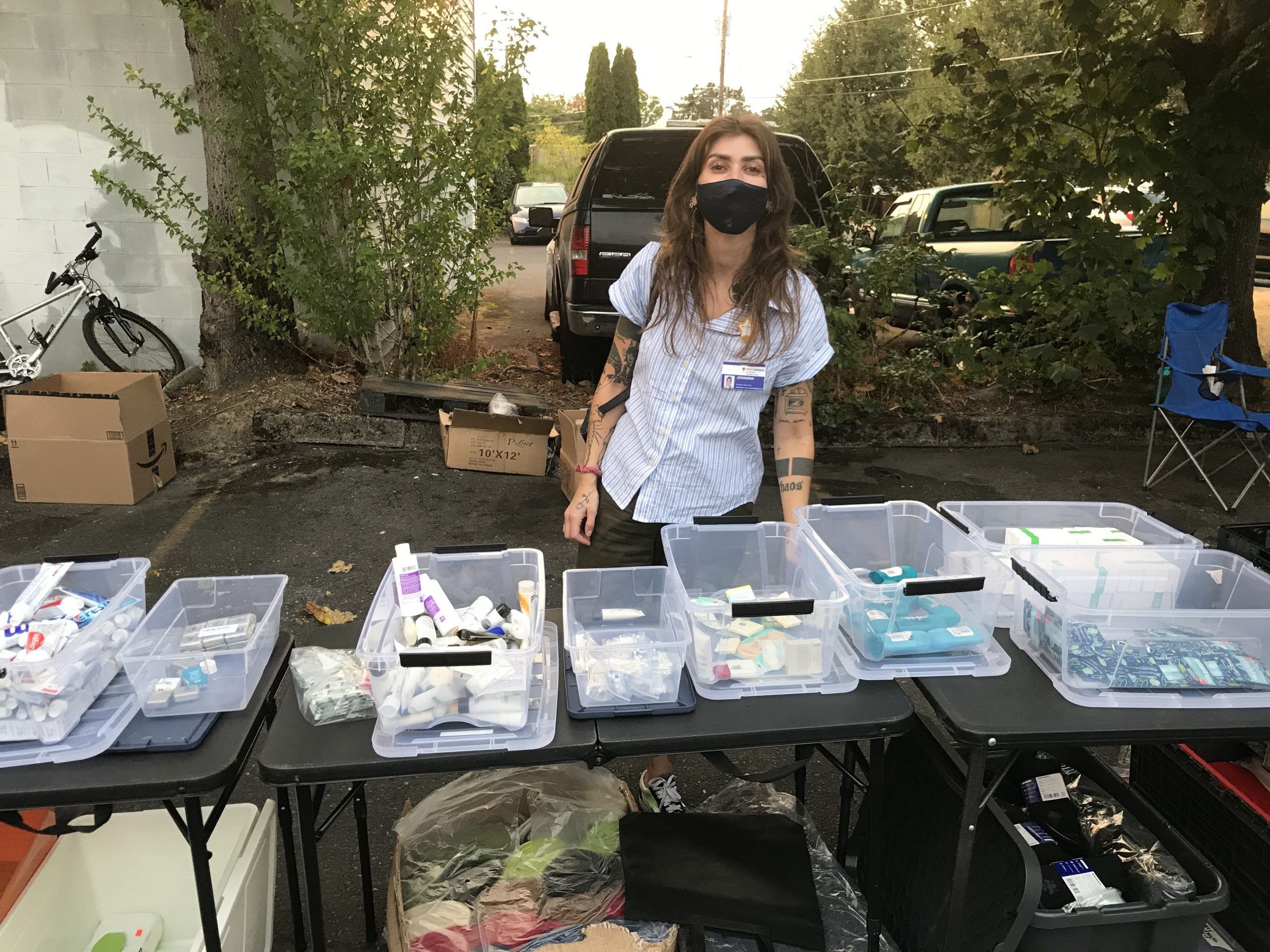



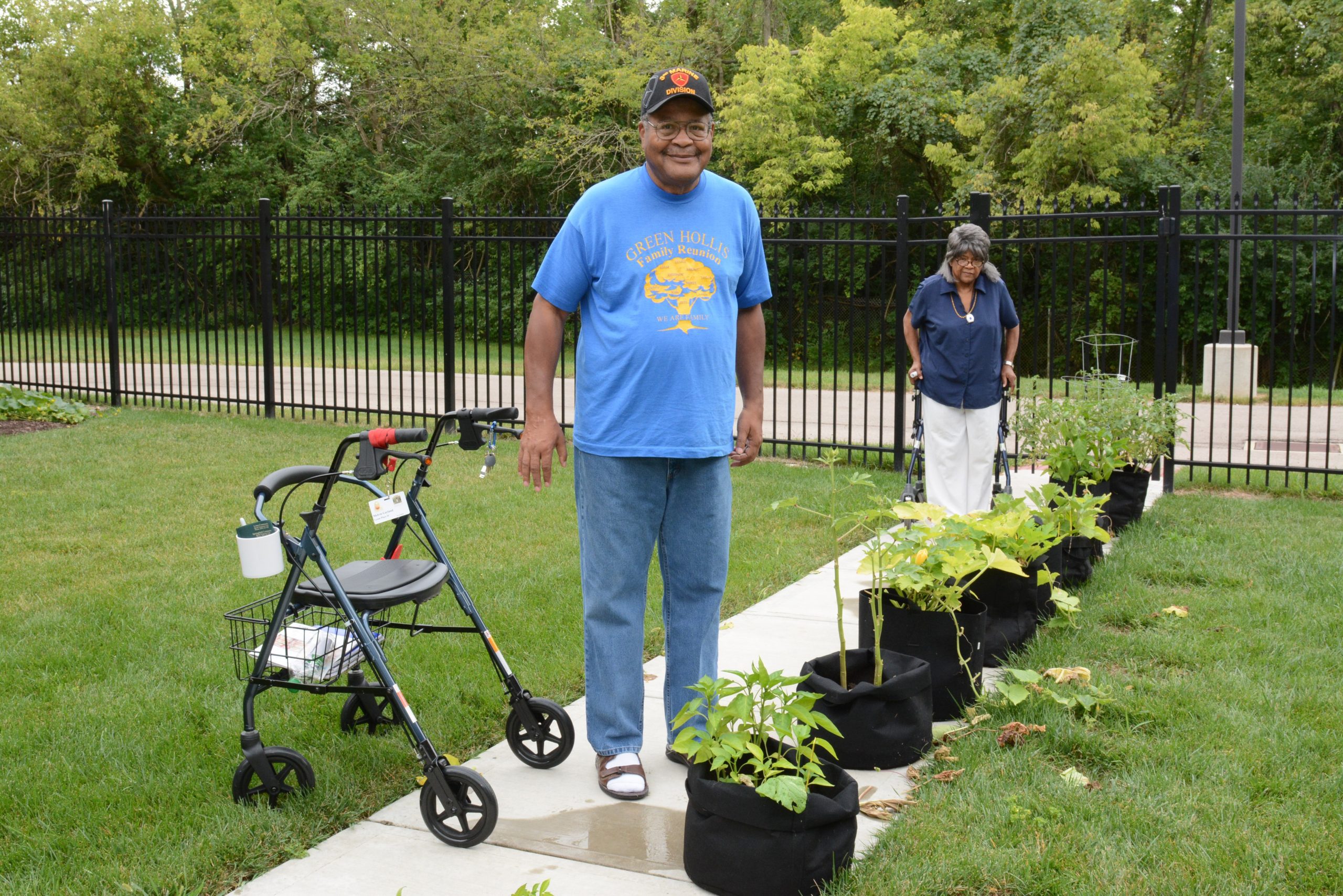
Comments